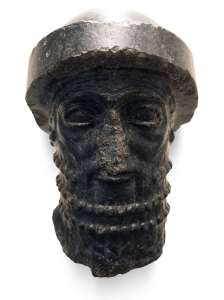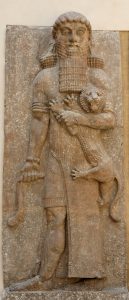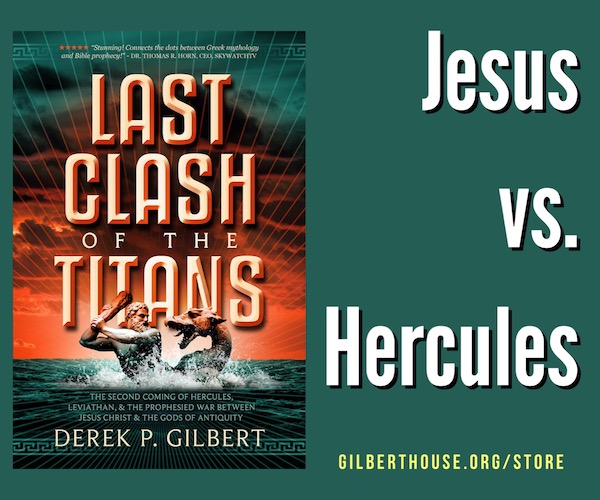
Hammurabi the Great, who reigned from 1792 to 1750 BC, is mostly remembered for his law code, one of the oldest discovered. It was carved into a basalt pillar shaped like a giant index finger and covered a variety of legal issues from family matters to penalties for medical malpractice and shoddy home construction.[1] However, his ability to assemble an empire from a city without any natural strategic advantages was probably his most remarkable attribute. During his forty-two-year career, Hammurabi managed to subdue the Amorite kings ruling the former Sumerian homeland to the south, the Akkadian homeland of which he was a part, and the lands along the Euphrates River as far as Mari, near the border of modern-day Iraq and Syria. And he wasn’t above turning on allies to do it, as when he destroyed Mari, a sour turn of events for Hammurabi’s ex-friend, the Mariote king Zimri-Lim.
The rise of Hammurabi’s Babylon completed a transition from the Sumerian-style city-states of the third millennium BC to what we think of as kingdoms. One of the aspects of Sumerian culture that also changed with the rise of Babylon was the power structure of the gods. You see, the cities of Sumer and Akkad each had a patron god or goddess. Oddly, the most important religious cities didn’t always carry the most political clout. Case in point: The chief god of the Sumerian pantheon, Enlil.
Enlil was the patron god of Nippur, which never ruled Sumer but was, along with Eridu, one of the two most important religious sites in the region. Nobody knows why Nippur, about a hundred miles southeast of modern Baghdad, was founded where it was. It began as a collection of reed huts in a marsh alongside the Euphrates River. Over time, garbage, debris, and earth were piled up to lift the town above the surrounding marsh. You’d think the “king of heaven and earth” and “father of the gods” could find a better piece of real estate.
But while Nippur never dominated the politics of Mesopotamia, control of the city was important. Enlil was subject only to Anu, the sky-god, and he was the only god who could even reach Anu. Enlil was sort of Anu’s agent, and, most important, only Enlil could convey “kingship” to human rulers. So, as the old saying goes, possession of Nippur was nine-tenths of the law. You can imagine the temptation for an ambitious ruler in ancient Sumer; grabbing control of Nippur would be proof that Enlil wanted him to be king.
The temple of Enlil was the E-kur (“House of the Mountain”), a curious title for a temple in the middle of a marsh. Enlil himself was called “Great Mountain.” This is even more interesting when we remember that mountains have always been considered the home of gods and that there aren’t any mountains in southeast Iraq. That’s why Nimrod tried to build Babel as “the abode of gods”—it was an artificial “mount of assembly.”[2] Even in flat, marshy Sumer, gods lived on mountains, even when they had to be made out of stacked mud bricks.
Two generations before Gilgamesh, a Sumerian king named Enmerkar ruled the ancient Near East. Both men ruled from the city of Uruk in what is now southeastern Iraq—which, you might have noticed, is just an alternate spelling of the city’s name. In the Bible, it’s spelled “Erech,” which, along with Babel, was “the beginning of [Nimrod’s] kingdom.”
From there, the legendary kings of Uruk ruled nearly the entire Fertile Crescent, the land between the Euphrates and Tigris rivers in what is now Iraq, Syria, and southern Turkey. Scholars call this the Uruk Expansion, a period between about 4000 BC and 3100 BC. Logically, Nimrod would fit somewhere in that time frame.
Like Nimrod, Enmerkar was the second generation after the Flood. In my book The Great Inception, I show why Babel is not to be confused with Babylon, which wasn’t founded until at least a thousand years after the tower’s construction was interrupted. I believe that Enmerkar and Nimrod were one and the same. Babel was most probably at the ancient city of Eridu, and the tower was a ziggurat, the largest and oldest ever found in Mesopotamia, built as a temple to the Sumerian god Enki, the lord of the abyss.
According to a poem from the time of Abraham, Enmerkar/Nimrod hoped to build up the temple of Enki into a “holy mountain,” and to “make the great abode, the abode of the gods, famous for me.”[3] An abode of the gods directly above the abzu, the abyss? No wonder YHWH decided to personally intervene!
The Sumerian King List names Lugalbanda as Enmerkar’s successor as king of Uruk, and he was succeeded in turn by Gilgamesh. We don’t know whether Gilgamesh was Enmerkar/Nimrod’s grandson, but scholars generally consider him a historical character. A team of German archaeologists mapped Uruk in 2001 and 2002 using cesium magnetometry, and among their discoveries was a building under what was the bed of the Euphrates River in the 3rd millennium BC that was similar to ancient descriptions of the burial crypt of the legendary king.[4]

We don’t know whether Gilgamesh was Nimrod’s grandson, but he had his predecessor’s ambition and then some. Where Nimrod tried to conquer the known world and build a home for the gods in his kingdom, Gilgamesh set his sights on becoming immortal.
Evidence suggests that the king may have resorted to bringing back knowledge that had been lost beneath the waters of the Great Flood. According to the Book of Enoch, a group of angelic beings, called Watchers by the Hebrews, descended to the summit of Mount Hermon in the days of the patriarch Jared.[5] As Dr. Michael Heiser noted in Reversing Hermon, there was more to the visit of the Watchers than producing monstrous offspring; the rebellious angels brought with them information mankind was not meant to possess: Sorcery, charms, the cutting of roots and plants (probably for mixing potions), metalworking and the making of weapons, makeup (and presumably the art of seduction), and reading fortunes in the movement of the stars. In short, the Watchers lured humanity into evil, and “all the earth was filled with the godlessness and violence that had befallen it.”[6]
Gilgamesh was referred to on a Mesopotamian cylinder seal “master of the apkallu,”[7] and by the time of Hammurabi the Great, who was probably a contemporary of Isaac and Jacob, Gilgamesh was viewed as the one who had returned to mankind the pre-Flood knowledge of the apkallus[AP1] [DG2] —the Mesopotamian name for the Watchers.[8] In fact, it appears the sages and priests of Babylon believed it was precisely that arcane knowledge which (to borrow a phrase) Made Babylon Great Again.
Interestingly, the Old Babylonian text of the Gilgamesh epic establishes another link between Gilgamesh and the Watchers. To make a name for himself, Gilgamesh and his drinking buddy Enkidu decided to kill Huwawa (or Humbaba), the monster who guarded the Cedar Forest. In a sense, the pair aimed for a sort of immortality by performing a great deed.
Hear me, O elders of Uruk-the-Town-Square!
I would tread the path to ferocious Huwawa,
I would see the god, of whom men talk,
whose name the lands do constantly repeat.
I will conquer him in the Forest of Cedar:
let the land learn Uruk’s offshoot is mighty!
Let me start out, I will cut down the cedar,
I will establish forever a name eternal![9]
The Old Babylonian text of the epic locates the cedar forest on the peaks of “Hermon and Lebanon.”[10] After killing Huwawa, the two friends “penetrated into the forest, opened the secret dwelling of the Anunnaki.”[11]
This is significant for a couple of reasons. First, the mission of Gilgamesh and Enkidu may have been far darker than it appears on the surface. The late Dr. David Livingston, founder of Associates for Biblical Research, pointed out that “Huwawa” may have sounded a lot like “Yahweh” in ancient tongues. If Livingston was right, then the real mission of Gilgamesh was to achieve immortal fame and glory by killing the guardian of the secret home of the gods—Yahweh.[12]
Secondly, the Anunnaki, who were originally the great gods of Mesopotamia, had become the gods of the underworld by the time of Abraham.[13] Marduk, after defeating the chaos dragon Tiamat, decreed that the Anunnaki, or at least half of them, should relocate permanently to the nether realm.[14] The Hittites, who lived north of Mesopotamia in what is now Turkey, identified the Anunnaki as primordial deities of the underworld, possibly “an earlier generation of gods who had retired or were banished by the younger gods now in charge.”[15]
This is relevant because Gilgamesh, despite his desperate effort to avoid “the bane of mankind,” died anyway—and upon his death, according to the legend, was made ruler of the dead.
Gilgamesh, in the form of his ghost, dead in the underworld, shall be the governor of the Netherworld, chief of the shades![16]
This has special significance because of the importance of the ancestor cult among the Amorites, who founded the old kingdom of Babylon. For more than a thousand years, Amorites in the ancient Near East (modern Iraq, Syria, Lebanon, Jordan, Israel, Saudi Arabia, and northern Egypt) venerated their dead, especially the dead ancestors of their kings.[17] Although Gilgamesh was a Sumerian king who had departed this world a millennium before the great kings of Babylon, it seems he epitomized the venerated royal dead, and he played an important role in the ancestor cult and magical healing rituals of Babylon.[18]
In The Great Inception, I quote Canaanite (western Amorite) texts that describe rituals to summon the Rephaim, the spirits of the Nephilim, and something called the Council of the Didanu, which was apparently an underworld assembly of the old gods.
Now, get this: Didanu was the name of an ancient Amorite tribe from which the kings of Babylon, old Assyria, and Canaan claimed descent, and—here’s the good part—it was the word from which the Greeks got the name of their former gods, the Titans.[19]
Pause for that to sink in. Kings of the Amorites, neighbors of the ancient Hebrews from the time of Abraham through the time of the Judges, apparently believed they descended from gods later known to the Greeks as the Titans—the elder generation of deities who were overthrown by Zeus and the Olympians and banished to Tartarus.
Let’s take a moment to summarize. This is making my head spin, and I’m the one writing.
- Gilgamesh, a legendary (but probably historical) post-Flood king of Uruk in the fourth millennium BC, was obsessed with finding the key to immortality.
- He died sometime around 3000 BC, give or take a few centuries.
- Amorites more than a thousand years later linked Gilgamesh with the “shades” (the Rephaim?), the apkallu (the Watchers/Titans), and the Anunnaki, the gods of the underworld.
- If the Hittites and Hurrians were correct in identifying the Anunnaki as “former gods” who’d been overthrown and banished to the netherworld, then they, too, can be identified as the Hebrew Watchers and Greek Titans.
- The Anunnaki and the Watchers (and thus the Titans) were linked to Mount Hermon. Mount Hermon is also where Gilgamesh and Enkidu killed the monstrous Huwawa.
- By comparing their stories with the Bible, we can identify the Titans, the Anunnaki, and the apkallu as the Watchers of Genesis 6, “the angels who did not stay within their own position of authority” who are “kept in eternal chains under gloomy darkness until the judgment of the great day.”[20]
It is these small-G gods Nimrod tried to reach through the artificial mountain called Babel—and that was why God chose to put a stop to its construction. And Gilgamesh, his successor and possibly his grandson, was credited with bringing back to Mesopotamia the occult practices inspired by these gods.
[1] Roux, G. (1992). Ancient Iraq: Third Edition. London: Penguin Books. https://erenow.com/ancient/ancient-iraq-third-edition/13.html, retrieved 11/19/17.
[2] Gilbert, D. (2017). Babel, the Abyss, and the Gate of the Gods. The Great Inception. http://thegreatinception.com/2017/02/12/the-great-inception-part-3-babel-the-abyss-and-the-gate-of-the-gods/, retrieved 11/19/17.
[3] “Enmerkar and the lord of Aratta: translation.” The Electronic Corpus of Sumerian Literature. http://etcsl.orinst.ox.ac.uk/section1/tr1823.htm, retrieved 12/27/17.
[4] Becker, Helmut and Fassbinder, Jörg W.E. (2003), “Magnetometry at Uruk (Iraq): The City of King Gilgamesh,” Archaeologia Polona, 41, pp. 122-124.
[5] 1 Enoch 6:6. Although the scholar Edward Lipinski suggested in his 1971 paper “El’s Abode” that “days of Jared” should read “days of the yarid,” which was a ritual libation—a drink offering for the gods. As Lipinski noted, the summit of Mount Hermon is scooped out, and earlier scholars, such as Charles Clermont-Ganneau in 1903, speculated that this may have been where worshipers poured their liquid offerings.
[6] Nickelsburg, George W.E. 1 Enoch: The Hermeneia Translation. Fortress Press. Kindle Edition, p. 26.
[7] Greenfield, J.C. (1999). “Apkallu,” Dictionary of Deities and Demons in the Bible. Van der Toorn, K., Becking, B., & Van der Horst, P. W. (Eds.). Brill, p. 73.
[8] Annus, Amar (2010). “On the Origin of Watchers:
A Comparative Study of the Antediluvian Wisdom in Mesopotamian and Jewish Traditions.” Journal for the Study of the Pseudepigrapha, Vol 19, Issue 4, pp. 277 – 320.
[9] George, Andrew (1999). The Epic of Gilgamesh (London: Penguin Books), 111-112.
[10] Lipiński, Edward (1971). “El’s Abode: Mythological Traditions Related to Mount Hermon and to the Mountains of Armenia,” Orientalia Lovaniensa Periodica II, p. 19.
[11] Ibid.
[12] Livingston, David (2003). “Who Was Nimrod?” http://davelivingston.com/nimrod.htm, retrieved 12/27/17.
[13] “Anunna.” Ancient Mesopotamian Gods and Goddesses. http://oracc.museum.upenn.edu/amgg/listofdeities/anunna/index.html, retrieved 12/27/17.
[14] Pritchard, James B., ed. (2010). The Ancient Near East: An Anthology of Texts and Pictures (Princeton University Press), p. 34.
[15] Lieck, Gwendolyn (1998). A Dictionary of Ancient Near Eastern Mythology (New York City, New York: Routledge), p. 141.
[16] George, op. cit., p. 199.
[17] This is well established, but see, for example: Spronk, Klaas (1986). Beatific Afterlife in Ancient Israel and in the Ancient Near East. Kevelaer: Butzon & Bercker, Neukirchen-Vluyn.
[18] Frölich, Ida (2014). “Mesopotamian Elements and the Watchers Traditions”, in The Watchers in Jewish and Christian Traditions (ed. Angela Kim Hawkins, Kelley Coblentz Bautch, and John Endres; Minneapolis: Fortress), p. 23.
[19] Annus, Amar (2000). “Are There Greek Rephaim? On the Etymology of Greek Meropes and Titanes”, Ugarit Forschungen 31 (1999), 13-30.
[20] Jude 6.


Absolutely brilliant. Can I ask a question about nimrod. Many believe nimrod to be Gibborim/giant and therefore nephalim because they are mentioned as Gibborim also but I thought nimrod to be Human only. What is your theory and explanation for this and how do we dispute it or support nimrod being Human and not some sort of nephalim hybrid.
Good question. There is nothing in scripture that calls Nimrod one of the Nephilim. It’s possible that he did something through occult rituals that affected him epigenetically, giving him power he wasn’t born with, but that is speculation. We just can’t know one way or the other.
Great article! When I read about the forest of cedars and shades, it reminds me of Ezekiel 31.
Yes! Great catch. We agree.